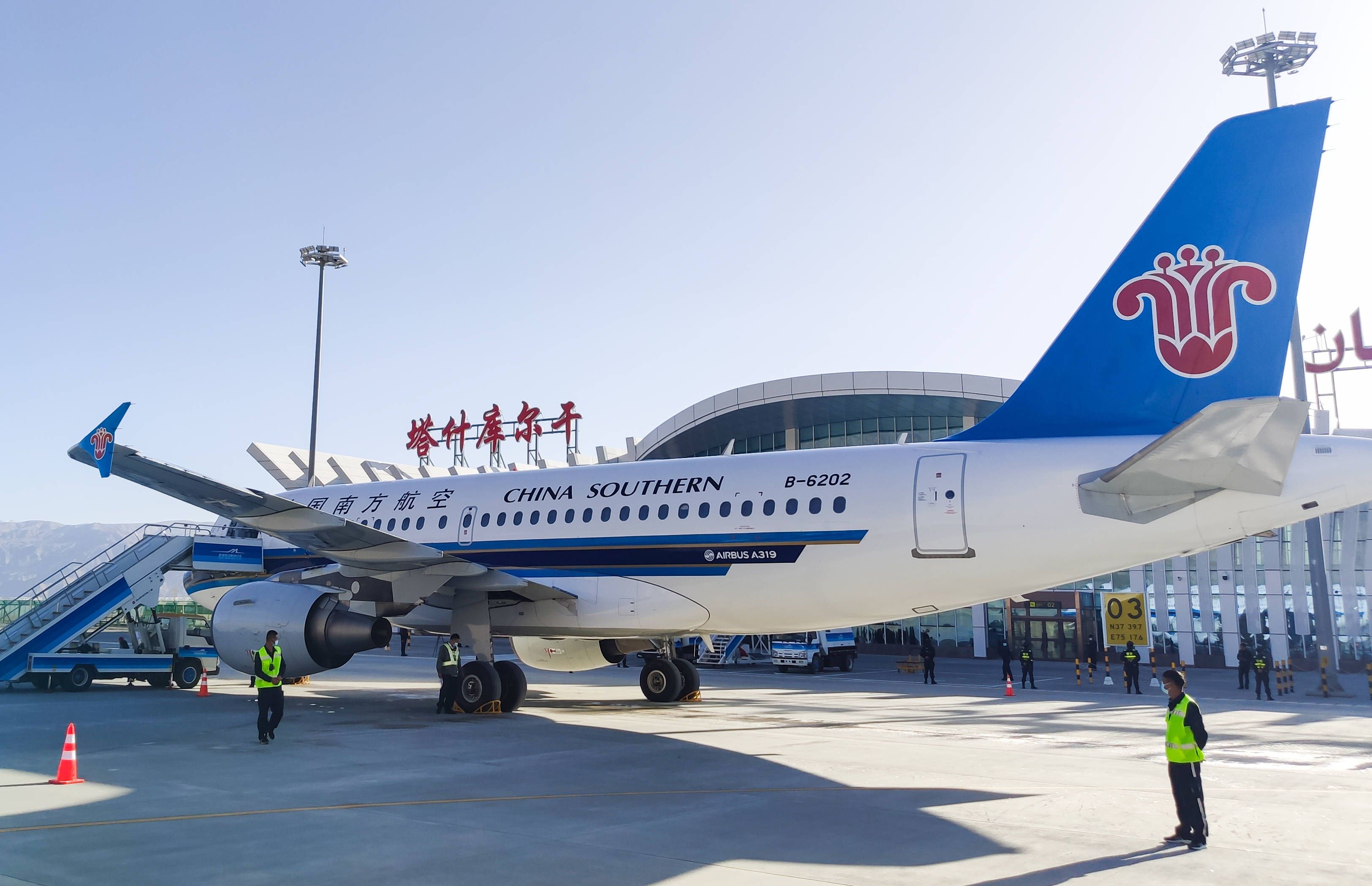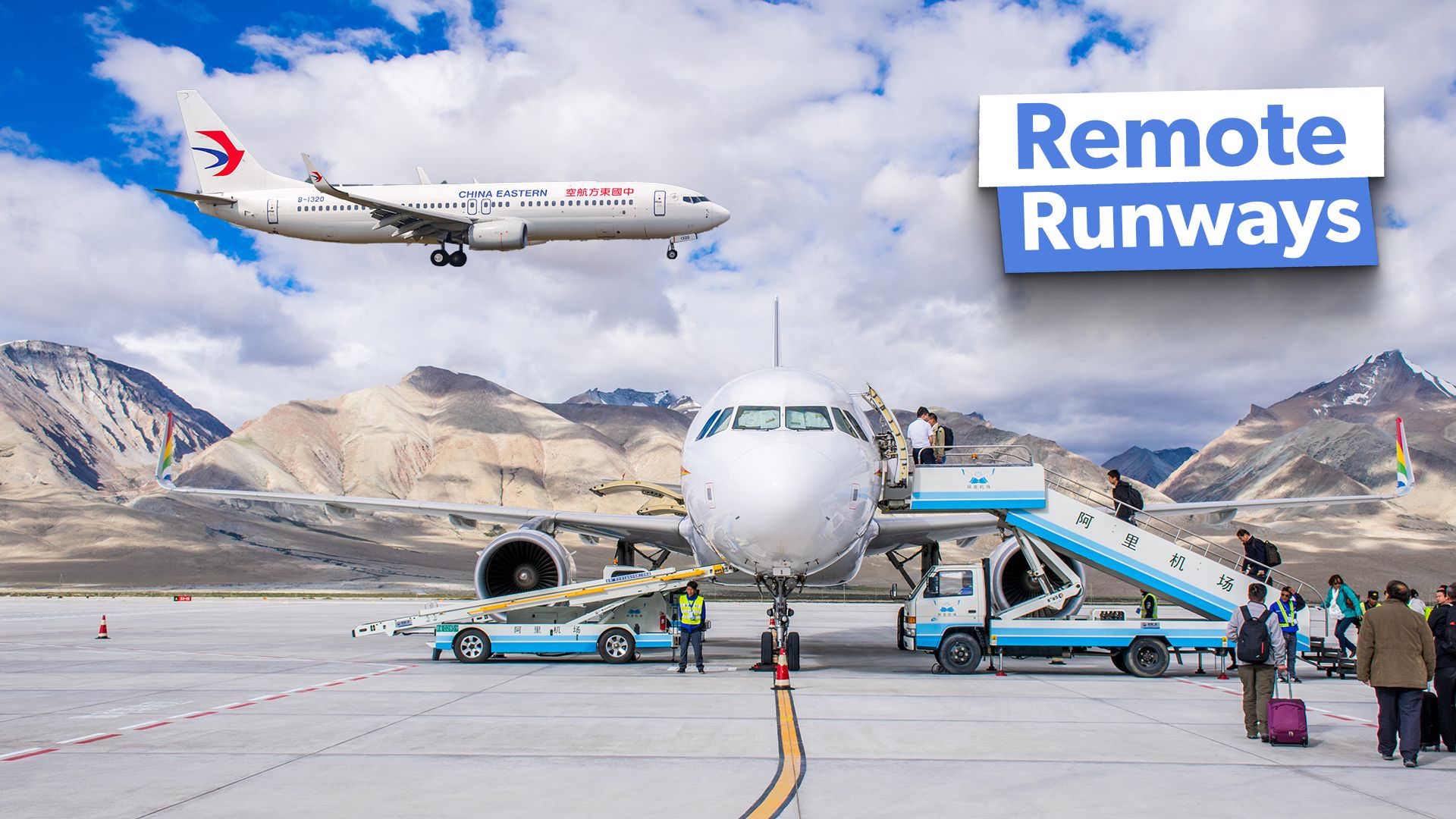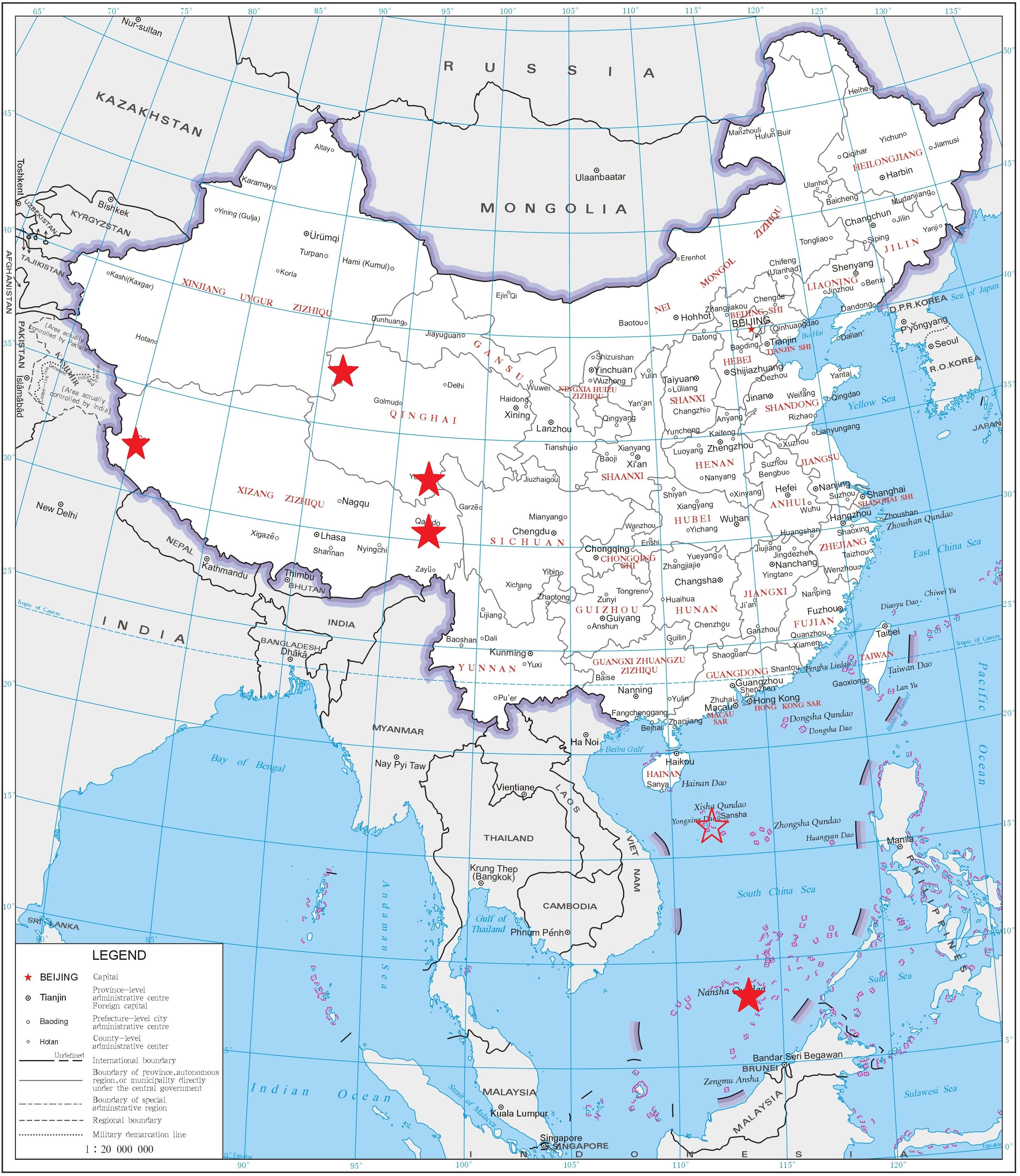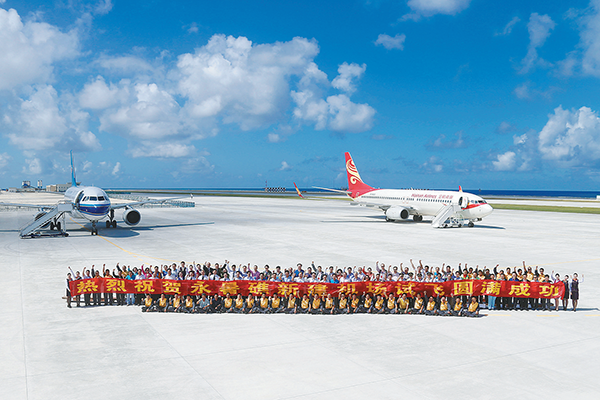Summary
- Remote airports in China are crucial for connecting isolated regions via essential services.
- Airports like Nagri Gunsa, Qamdo Bangda, and Yushu Batang, serve as lifelines for remote areas.
- These airports defy challenging terrain and isolation, helping integrate isolated regions into China.
China is the third-largest country in the world by area, following only Russia and Canada. With its vast expanse and diverse terrain, China is home to some of the most remote and isolated regions on Earth. From the towering peaks of the Himalayas to the barren Gobi Desert and the distant islands of the South China Sea, these far-flung corners present unique challenges for connectivity and transportation. Yet, within these remote areas lie vital lifelines: airports that serve as the only gateways to the outside world.
In a country as vast, geographically diverse, and sparsely populated as China, these remote airports play a crucial role in connecting people and places. They provide essential access to economic opportunities, medical services, and cultural exchange, often bridging the gap between isolation and integration.
This article explores five of China’s most remote civilian airports, each situated in some of the most desolate and rugged terrain imaginable. From the frozen plateaus of Tibet to the distant islands of the South China Sea, these airports are more than just transportation hubs—they are symbols of human resilience and the relentless drive to connect even the most distant parts of the world.
Illustrated by Su Wu / Map: Ministry of Natural Resources of the People’s Republic of China
1
Haixi Huatugou Airport (HTT)
The airport in the Hoh Xil (Kekexili) region
Haixi Huatugou Airport (HTT) is located at the border between Qinghai Province and the Xinjiang Uygur Autonomous Region in China, in the northern part of the famous Hoh Xil (Kekexili) region. Administratively, the airport belongs to Haixi Mongolian and Tibetan Autonomous Prefecture in Qinghai Province. Situated at an elevation of 2,906 meters, Haixi Huatugou is a high-altitude airport and is classified as a 4C-grade domestic regional airport.
Construction of Haixi Huatugou Airport began in 2012, and three years later, on June 26, 2015, the airport officially commenced operations.
The airport is positioned in the northernmost part of the Qinghai-Tibet Plateau. The surrounding area, particularly Mangya City, is known as an oil town, thanks to the discovery of petroleum in the 1950s. Haixi Huatugou Airport does not have a railway connection, and the nearest major cities are reachable only by long road trips. The airport is situated on a key transportation route between Qinghai Province and Xinjiang.
According to the Baidu Navigation, it takes about 15 hours (1,300 kilometers) by road to reach Urumqi, the capital of Xinjiang, 19 hours (1,700 kilometers) to reach Kashgar, and 14 hours (1,250 kilometers) to reach Xining, the capital of Qinghai Province.
Currently, China Eastern Airlines is the sole carrier operating at Haixi Huatugou Airport, offering three direct routes to different destinations. These include flights to Xining, with four flights per week; to Dunhuang, also with four flights per week; and to Delingha, with three flights per week. All routes are served by Airbus A319 aircraft.
2
Yushu Batang Airport (YUS)
An airport on the edge of the Tibetan Plateau
Yushu Batang Airport (YUS) is located at the intersection of Qinghai Province, Tibet Autonomous Region, and Sichuan Province, in the northeastern part of the Qinghai-Tibet Plateau. With an elevation of 3,950 meters, it is classified as a high-altitude airport and ranks as the seventh-highest airport in the world. The airport is a 4C-grade domestic regional airport.
In 2007, China approved the construction of Yushu’s civil airport, and work commenced the same year. On August 1, 2009, Yushu Batang Airport officially opened, with its inaugural flight operated by China Eastern Airlines on the Xi’an–Xining–Yushu route using an Airbus A319 aircraft.
Just over eight months after the airport’s opening, a 7.1-magnitude earthquake struck Yushu on April 14, 2010, severing road connections and leaving Yushu Batang Airport as the only viable route for disaster relief. In the 24 days following the earthquake, the airport facilitated 490 rescue flights, transported 17,051 rescue personnel, delivered 2,174.86 tons of relief materials, and evacuated 2,133 injured individuals.
Yushu Airport is situated in a river valley in the southern part of Yushu Tibetan Autonomous Prefecture in Qinghai Province. The airport lacks railway connections, and the nearest major cities are far from easy reach by road. The airport is located roughly midway between Xining, the capital of Qinghai Province, and Lhasa, the capital of Tibet Autonomous Region. By road, it takes about 11 hours (810 kilometers) to reach Xining and 19 hours (1,000 kilometers) to reach Lhasa.
Currently, three airlines operate regular passenger routes at Yushu Batang Airport. Tibet Airlines offers two daily flights to Xining; China Eastern Airlines operates one daily flight to Xining and one to Chengdu; and Capital Airlines provides two daily flights to Xining. All three airlines use Airbus A319 aircraft on these routes.
3
Qamdo Bangda Airport (BPX)
World’s 2nd highest airport in Hengduan Mountains
Qamdo Bangda Airport (BPX) is nestled among the eastern mountains of China’s Tibet Autonomous Region, at an elevation of 4,334 meters. This high-altitude airport is the second-highest airport in the world and is classified as a 4C-grade military-civilian dual-use regional airport. Qamdo Bangda Airport‘s’ runway length is 5 kilometers, which is also the longest civil airport in China.
The construction of Qamdo Airport was approved in 1969 during the Cultural Revolution, but it wasn’t until nearly a decade later, in 1978, that Qamdo Bangda Airport was completed and became operational. The construction process was arduous, claiming the lives of 89 workers. Initially, the airport was used exclusively by the Air Force as a military airport. However, in 1992, a military-civilian expansion project commenced, and on April 28, 1995, Qamdo Bangda Airport officially opened for civil aviation services.
Situated in the Hengduan Mountains, Qamdo Airport is located in a narrow valley between the Nujiang (Salween) and Lancang (Mekong) rivers, in an area known for its treacherous terrain. The airport lacks railway connections, and access by road is limited to two routes: a northern route that takes about two and a half hours (123 kilometers) to reach Qamdo (Changdu) City, and a southern route that takes about an hour (50 kilometers) to reach the famous G318 National Highway. From there, travelers can head west for 21 hours (1,060 kilometers) to reach Lhasa, or east for 18 hours (930 kilometers) to reach Chengdu.
Currently, three airlines operate regular passenger routes at Qamdo Bangda Airport. Tibet Airlines offers flights to Lhasa, Xi’an, Chengdu, and Chongqing, with one to two flights daily on each route. Air China’s Southwest branch operates two daily flights to its base in Chengdu, while West Air, a subsidiary of Hainan Airlines Group (HNA Group), offers one daily flight to its base in Chongqing. All three airlines use Airbus A319 aircraft for these routes.
4
Sansha Yongshu Airport (YXG)
An airport 1370 km from mainland China
Sansha Yongshu Airport (YXG) is located on Yongshu Island in Sansha City, Hainan Province, China. Yongshu Island also serves as the administrative center of the Nansha District within Sansha City. Sansha Yongshu Airport is the southernmost airport in China and is classified as a 4C-grade military-civilian regional airport.
Sansha City was established in 2012, and the construction of Sansha Yongshu Airport began in 2014. On January 6, 2016, the airport successfully conducted its first civil aviation test flight. The test flight was carried out by China Southern Airlines and Hainan Airlines, using an Airbus A320-200 and a Boeing B737-800 from their Haikou Meilan International Airport base. The flights also carried some relatives of the military personnel stationed on Yongshu Island.
Photo: Hainan Government
Although Sansha Yongshu Airport is technically a military-civilian airport, due to national defense considerations, China has not developed large-scale tourism in the Nansha Islands. As a result, ordinary Chinese citizens cannot purchase tickets to fly to Sansha Yongshu Airport.
Currently, Sansha Yongshu Airport only operates occasional flights to Haikou, the capital of Hainan Province. To purchase tickets, one must provide a valid reason, such as visiting military personnel stationed on the island.
In addition, China has three other airports on the islands under Sansha City’s control, located on Yongxing Island, Zhubi Reef, and Meiji Reef. Among these, Sansha Yongxing Airport (XYI) on Yongxing Island in the Xisha Islands is also a military-civilian airport, while the other two airports on Zhubi Reef and Meiji Reef are currently military airports with no civil aviation flights.
Sansha Yongxing Airport (XYI) is located on Yongxing Island in Sansha City, Hainan Province, China. Yongxing Island also serves as the administrative center of Sansha City in Hainan Province. Sansha Yongxing Airport is classified as a 4C-grade military-civilian airport.
In April 1991, Yongxing Island’s military airport was completed and opened. In 2012, Hainan Province applied to expand Yongxing Island Airport to serve both military and civilian purposes. On December 22, 2016, Sansha Yongxing Airport officially began civil aviation operations, with Hainan Airlines operating a government charter flight route from Haikou to Sansha using a Boeing B737-800.
The runway at Sansha Yongxing Airport is 3,000 meters long and 50 meters wide, capable of accommodating aircraft up to the size of a Boeing B737-800.
5
Ngari Gunsa Airport (NGQ)
The most remote airport in Tibet
Ngari Gunsa Airport (NGQ) is located in the Ali region of China’s Tibet Autonomous Region, sitting at an elevation of 4,274 meters above sea level. Classified as a high-altitude airport, it ranks as the third-highest airport in the world. The airport is situated 44 kilometers from the administrative center of Gar County in the Ali region. It officially opened for operations on July 1, 2010, with its inaugural flight operated by Air China’s Southwest branch using an Airbus A319 on the Chengdu–Lhasa–Ali route.
The Ali region, with an average elevation of 4,500 meters, is located in western Tibet, approximately 1,600 kilometers from Lhasa, the capital of Tibet Autonomous Region. This area is where the Himalayas, Gangdise, and Karakoram mountain ranges converge. Ali is renowned for its unique natural scenery and cultural sites, most notably Mount Kailash and Lake Manasarovar, considered as sacred places by Buddhists. However, due to challenging transportation conditions, reaching these remote landmarks has long been difficult for travelers.
In terms of transportation, the Ali region lacks railway connections and is accessible by only three main roads: one leading north over the Kunlun Mountains to Kashgar in Xinjiang, one heading east to Chamdo, and one extending southeast to Lhasa. According to the Baidu Navigation, the distances from Ali to Kashgar and Lhasa by road are approximately 1,300 kilometers and 1,450 kilometers, respectively, with travel times averaging around 24 hours.
Currently, Ngari Gunsa Airport (NGQ) offers two regular passenger routes: one to Lhasa and another to Kashgar. The Lhasa route is operated by Tibet Airlines using Airbus A319 aircraft, with three to four flights daily. The Kashgar route is serviced by Lucky Air using Boeing 737-700 aircraft, with one flight daily.
China’s remote airports are vital connections for some of the country’s most isolated and challenging areas. These airports do more than just link distant regions to the rest of the world—they provide crucial access to services, support local communities, and help integrate these far-flung places into the nation. From the high mountains of Tibet to the far-off islands of the South China Sea, these airports are lifelines that keep even the most remote corners of China connected.

Related
China Will Open Its Westernmost Airport On Friday
Xinjiang welcomes its 25th airport into operation, making Xinjiang still rated No.1 among provinces regarding the number of airports within China.



